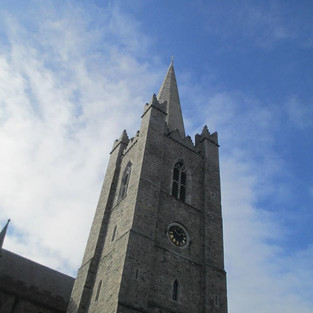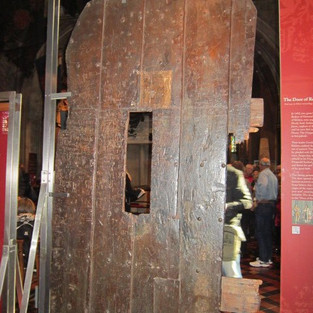Saint Patrick's Cathedral, Ireland
- Britney Heerten

- Mar 31, 2020
- 3 min read
Updated: May 15, 2024

A photo from my trip above
In honor of the holiday that just passed, Saint Patrick's Day, I thought it would be appropriate to talk about my trip to Ireland back in 2013. I had the opportunity to see historic architecture unlike anything that we have in the U.S. One if the sites I was able to visit was Saint Patrick's Cathedral in Dublin. Since it has been 7 years since I visited some of the facts slipped my mind, so I went back and did some research to learn more about this beautiful cathedral that is the tallest in the country.
The cathedral was built between 1120-1259 on the site of a well that was supposedly used by Saint Patrick himself to baptize Christians. The building that presently stands replaced a building from 1191 that was most likely wooden. The current building was built from local limestone and imported stone from Bristol. This cathedral has undergone multiple and on going renovations that today are supported by the funds from tours.
The Gothic style cathedral was built in the shape of a cross with the long portion that is called the nave forming the long portion of the cross. The area that resembles the top of the cross is known as the choir and the part that resembles the arms are known as the transepts.
Arch Bishop Luke (1219-1260) is responsible for the construction of the church, but he had gone blind by the time the project was complete so he was unable to see the final result.
In 1270 the Lady Chapel, later known as the French Chapel, was added.
In 1309 the spire fell down due to a storm.
In 1362 an accidental fire damaged the cathedral.
In 1370 repairs to the tower were made by Arch Bishop Minot and the tower was later renamed the Minot's Tower.
1394 Minot's Tower collapsed and destroyed a large portion of the west end of the cathedral. The tower was eventually rebuilt, but was not renamed.
After the English Reformation the cathedral became Anglican and many interior changes such as removing statues and decor. During the the turbulent times of Edward VI. The cathedral became a court house and a university for a period of time, but was restored to a cathedral under the reign of Queen Mary in 1555. In 1560 a clock was added to the tower and in 1700 a spire was added.
In 1860 the cathedral was in a bad state once again and Benjamin Lee Guinness saw that the renovation desperately needed to happen so he offered to pay for it, but only if he could have complete control of the project.
"The floor of the nave was raised to the same level of the Choir. Probably the greatest interior change to the building was the removal of the screens which separated the nave, choir and transepts. Benjamin Lee Guinness did not feel that these were in keeping with a post-reformation Cathedral where the clergy and congregation were treated as equals. In 1865 the Cathedral was reopened in an elaborate ceremony at which Benjamin Lee Guinness was presented with a book of thanks compiled of signatures from representatives of the Cathedral and from citizens of the city. Overall Guinness spent approximately 150,000 pounds on the restoration of the building." - https://www.stpatrickscathedral.ie/the-history-of-the-building/
All of the windows in the cathedral have been replaced. The gorgeous triptych stained glass windows depict stories of Saint Patrick.
There is an estimated 600-700 people buried in and on the grounds of the cathedral. One of the most well known is Jonathan Swift, the author of "Gulliver's Travels." He was Dean of the cathedral in the 1700's.
























































Comments